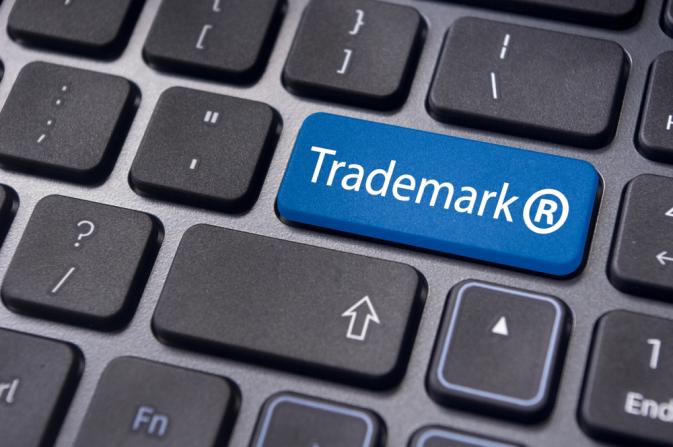
Trademarks – Understanding the Principal Register and the Supplemental Register
© 2010, Gallagher & Dawsey Co., LPA
April 2010
Clients are often surprised to learn that the United States has two sections of the Federal Trademark Register: the Principal Register and the Supplemental Register. Most marks are registered on the Principal Register, and the Supplemental Register is reserved for non-distinctive marks that have the hopes of acquiring distinctiveness (i.e. “secondary meaning”), but have not yet done so.
A. Secondary Meaning
Secondary meaning, which is also referred to as “acquired distinctiveness,” attaches when a non-distinctive mark becomes known to consumers for particular products or services due to the mark’s long-term and extensive use. An example of a mark acquiring secondary meaning is CHIPOTLE MEXICAN GRILL. This mark was originally registered on the Supplemental Register in 1995. That registration was used to show “acquired distinctiveness” and the mark achieved registration on the Principal Register several years later. The exact amount of use needed to prove secondary meaning varies according to each mark’s level of descriptiveness. After the mark has been used in commerce for at least five years and the use has been continuous and substantially exclusive, there may be enough evidence to prove that the mark has acquired secondary meaning. However, the ultimate decision as to whether the mark has acquired secondary meaning is a question of fact to be determined based upon the evidence of record.
B. Types of Marks Registered on the Supplemental Register
Marks registrable on the Supplemental Register include:
- descriptive marks that are capable of acquiring distinctiveness;
- surnames;
- geographic terms; and
- non-distinctive, non-functional trade dress.
C. Supplemental Register Protection
A registration on the Supplemental Register allows the owner the right to use the registered trademark symbol “®” when the mark is used with the products or services listed in the registration. A registration on the Supplemental Register will also block subsequent applications for confusingly similar marks for related goods.
D. Supplemental Register vs. Principal Register
Registration on the Supplemental Register does not provide all the protections afforded by the Principal Register. For example, a Supplemental Registration does not include the presumptions of validity, ownership and exclusive rights to use the mark that attach with a registration on the Principal Register. Also, Supplemental Registration cannot be used to stop importation of counterfeit products, nor can a Supplemental Registration become incontestable.
E. Registration on the Supplemental Register
Registration of a mark on the Supplemental Register is a good option if, for example, one is certain the USPTO will view the mark as descriptive and therefore not allow registration on the Principal Register. More often, however, the Patent and Trademark Office rejects an application for the Principal Register and gives its owner the option to amend the application to the Supplemental Register. A trademark must actually be used in commerce at the time the applicant seeks registration on the Supplemental Register. Thus, a trademark application that is filed on “an intent to use basis” may not be registered on the Supplemental Register.
F. Opposition of an Application for the Supplemental Register
Applications for registration on the Supplemental Register are not published for third party opposition, unlike applications for registration on the Principal Register. If a third party objects to an application for the Supplemental Register, it must attempt to cancel the registration after it issues.
G. Supplemental Registration Converted to Principal Registration
A Supplemental Registration cannot be converted into a Principal Registration. However, the owner of the Supplemental Registration can file a new application for a Principal Registration of the mark. If the trademark owner has used the mark to an acceptable degree that it has acquired secondary meaning, the mark may be granted registration on the Principal Register.
Conclusion
Both the Principal and Supplemental Registers are options to consider when seeking registration of a trademark. The Supplemental Register is good option for marks that are unable to obtain registration on the Principal Register. The benefits of a Supplemental Registration include:
- Initial term of 10 years, renewable for successive 10-year periods.
- Double protection against subsequent registration of confusingly similar marks first by USPTO internal examination and second by opposition/cancellation proceedings after publication/registration.
- Right to use the official federally registered trademark symbol “®” as notice of federal registration.
- Right to sue infringers in federal court and have federal law control key issues of validity, ownership, infringement, injunctions, and damages.
- Ability to obtain trademark protection in other countries under certain international treaties.
The Principal Register has additional benefits that include:
- A presumption that the trademark is valid (i.e., eligible subject matter, complies with all legal requirements, operates as a trademark, not abandoned).
- A presumption that the Registrant is the owner of the registered trademark.
- A presumption that the Registrant has the exclusive right to use the trademark nationwide.
